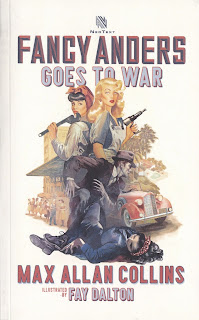This is the first novel in the Easy Company series of 31 westerns written by a number of authors using the John Wesley Howard pseudonym. This time (and apparently the only time), the author is Lou Cameron, the author who brought us 'Longarm' as well as the 'Renegade' series and the 'Stringer' series among many others. The “suicide boys” of the book’s title refer to a group of young, untested, would-be Indian warriors out to prove their bravery, and their actions in the novel lead to conflicts with the outpost.
I thoroughly enjoyed this first book in the series. The main characters of Easy Company, including the commander, his officers, 1st Sergeant, and a handful of enlisted men are all introduced as the story unfolds, as are the various leaders of the Indian tribes. An additional source of conflict arrives in the form of an IG inspector, a by-the-book man who struggles to understand why Easy Company finds it necessary to interpret the regulations creatively from time to time in order to preserve the peace.
If this first book is an indication of the quality of the entire series…well, I only have 30 more to read and I’ll enjoy each one of them.










